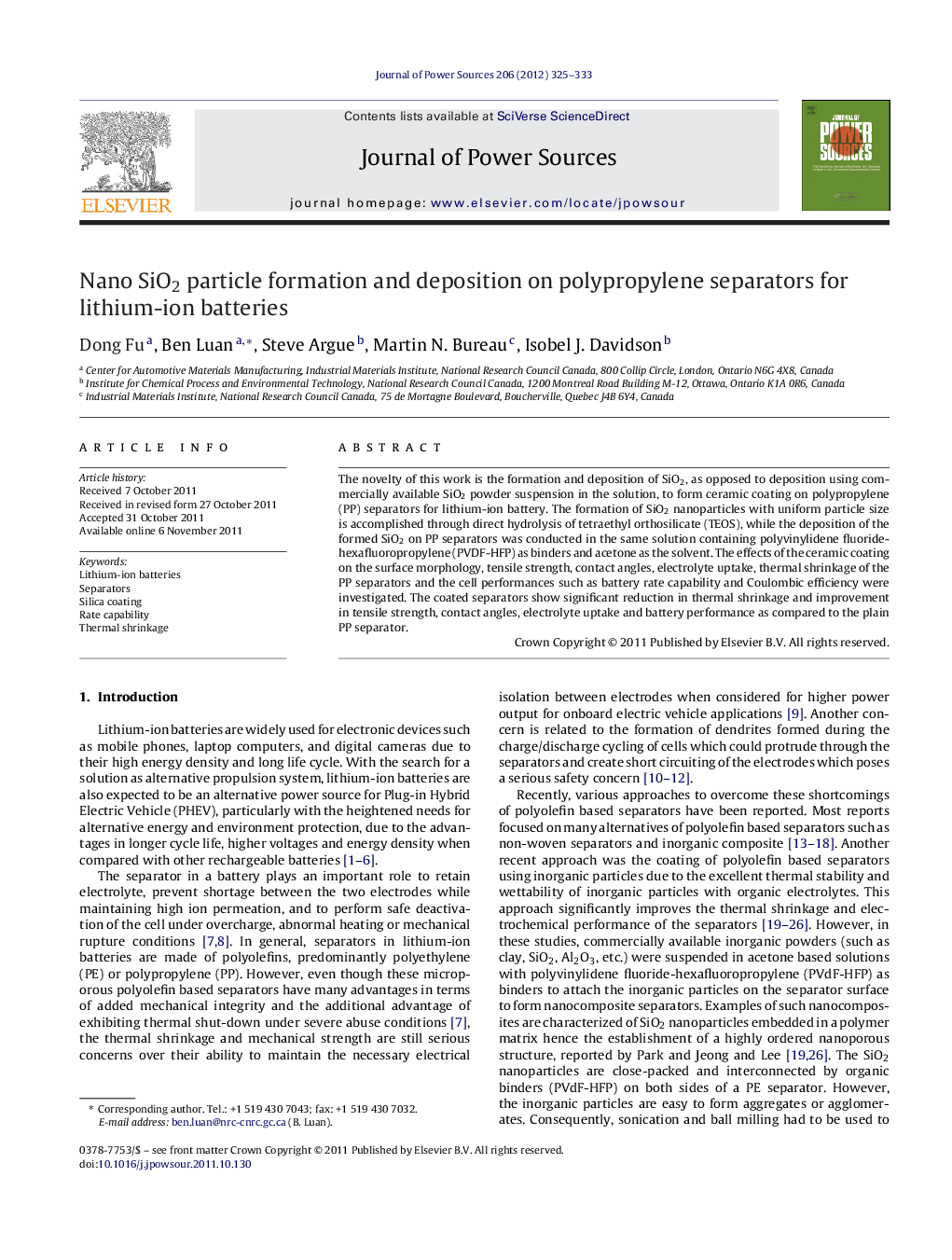| Article ID | Journal | Published Year | Pages | File Type |
|---|---|---|---|---|
| 1293094 | Journal of Power Sources | 2012 | 9 Pages |
The novelty of this work is the formation and deposition of SiO2, as opposed to deposition using commercially available SiO2 powder suspension in the solution, to form ceramic coating on polypropylene (PP) separators for lithium-ion battery. The formation of SiO2 nanoparticles with uniform particle size is accomplished through direct hydrolysis of tetraethyl orthosilicate (TEOS), while the deposition of the formed SiO2 on PP separators was conducted in the same solution containing polyvinylidene fluoride-hexafluoropropylene (PVDF-HFP) as binders and acetone as the solvent. The effects of the ceramic coating on the surface morphology, tensile strength, contact angles, electrolyte uptake, thermal shrinkage of the PP separators and the cell performances such as battery rate capability and Coulombic efficiency were investigated. The coated separators show significant reduction in thermal shrinkage and improvement in tensile strength, contact angles, electrolyte uptake and battery performance as compared to the plain PP separator.
► The formation and deposition of SiO2 forms ceramic coating on polypropylene separators. ► SiO2 nanoparticles are formed through direct hydrolysis of tetraethyl orthosilicate. ► The deposition of SiO2 on PP separators was conducted in the same solution. ► The coated separators show significant improvement in battery rate capability.
